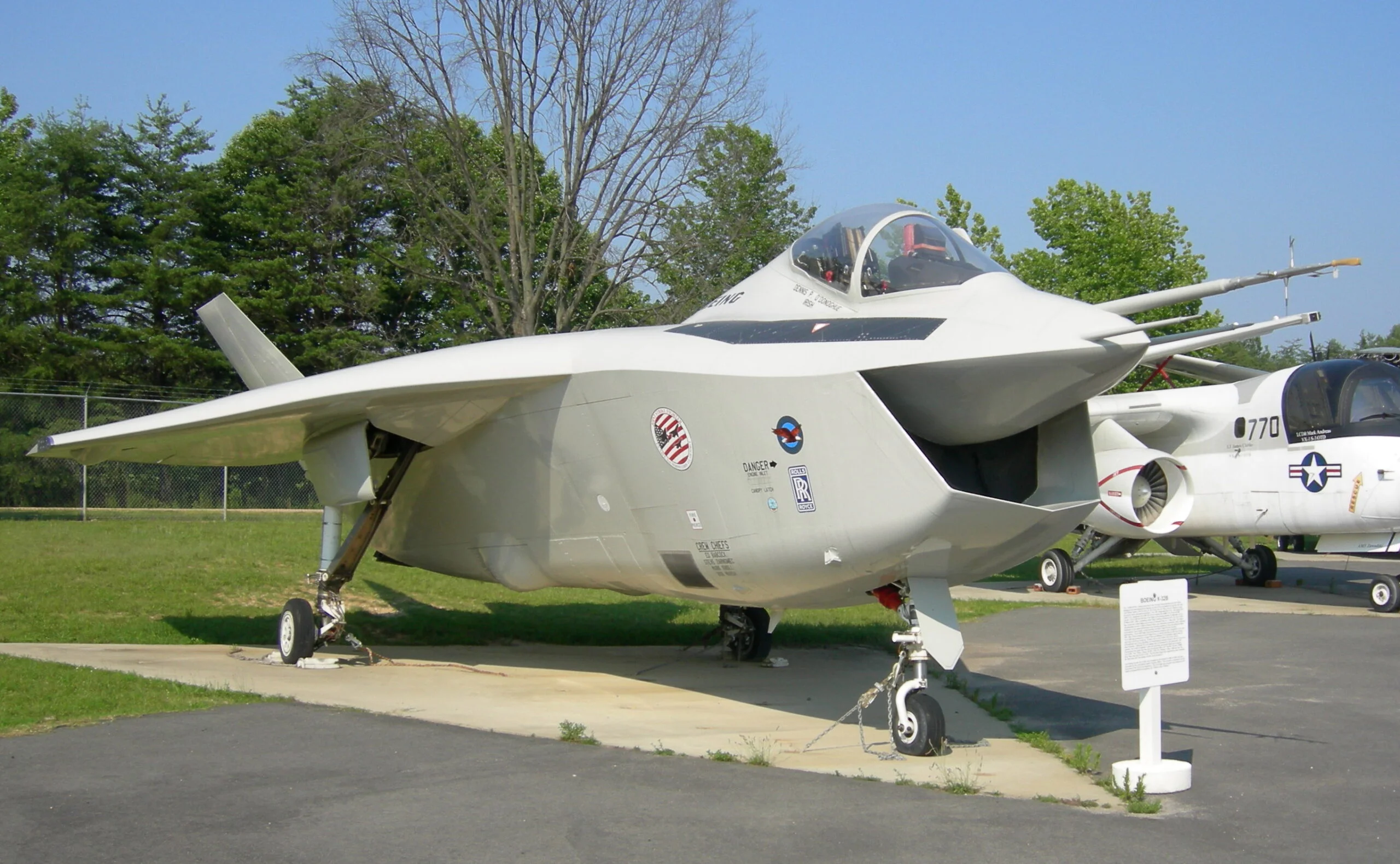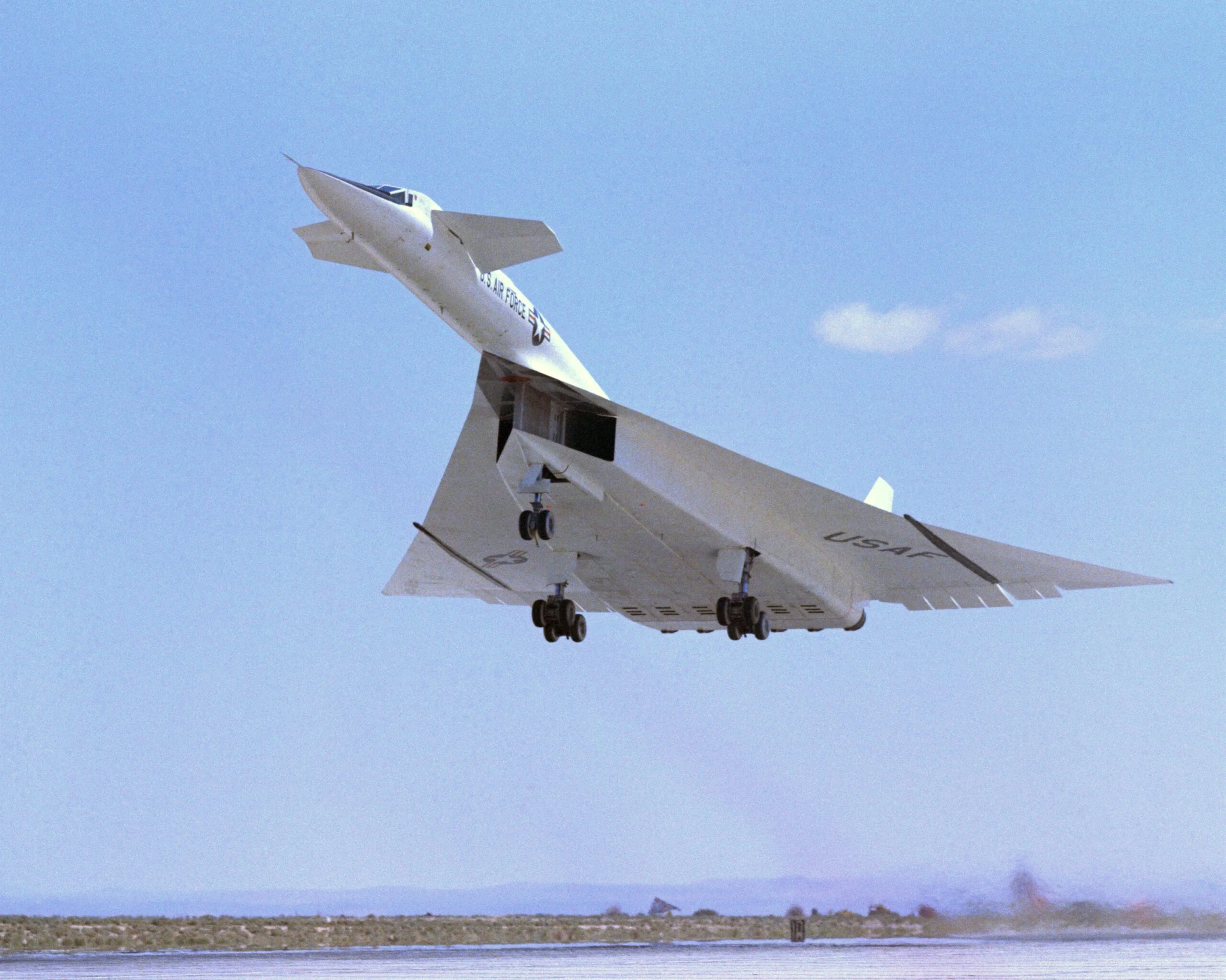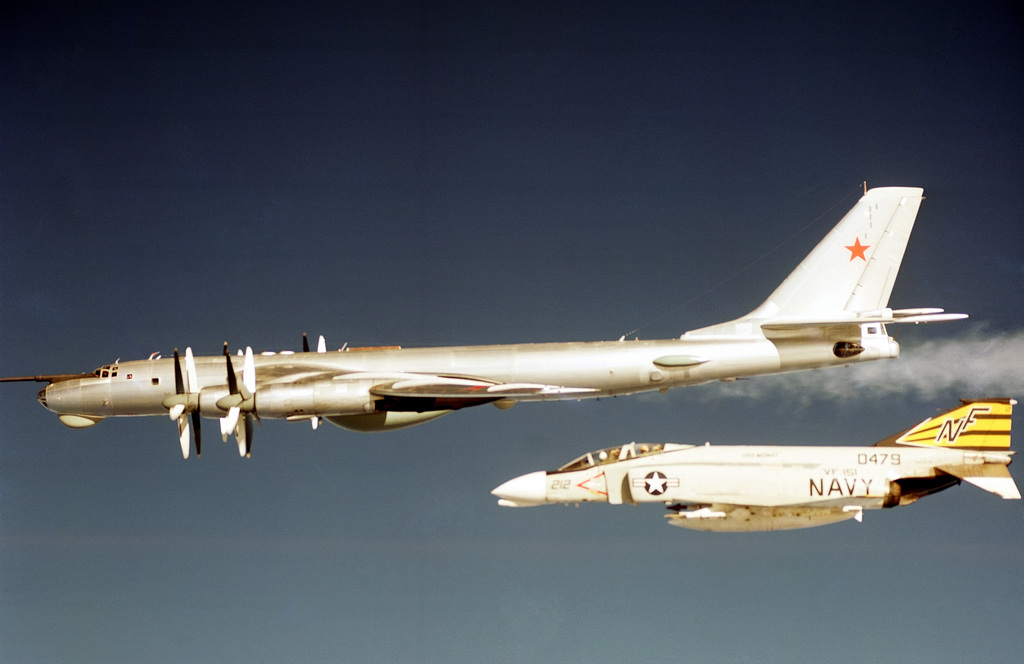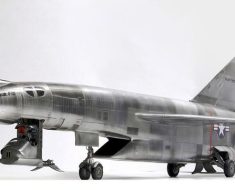The Boeing X-32 was an experimental aircraft that was developed by Boeing to compete in the Joint Strike Fighter (JSF) Program against Lockheed Martin’s X-35.
Despite displaying amazing features and fulfilling all the requirements of the United States Marine Corps, Air Force, and Navy, X-32 fell short of Lockheed’s X-35s and never made it past the JSF.
15 years later Lockheed’s aircraft came to be known as the F-35 Lightning II. While X-32 was praised for being less complex, easier to be manufactured, and displayed exceptional performance, among the aircraft enthusiast, it will be remembered for its chin-mounted air in taker, which gave the aircraft a unique shape.
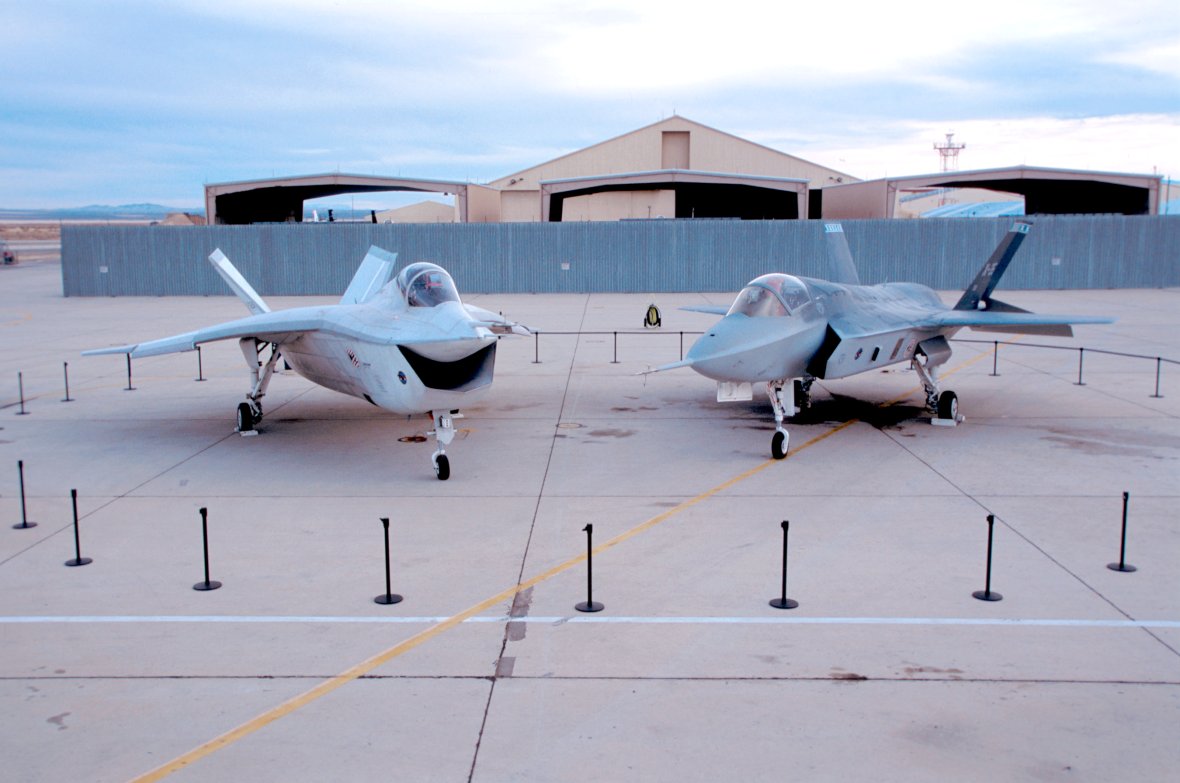
The aircraft would employ a direct vertical thrust, which was powered by a single Pratt & Whitney JSF F119-PW-614 engine, providing a max speed of Mach 1.6 and utilised stealth technology whilst being able to carry 6,800 kg (15,000 lb) of armament.
Contents
Development
The development of the X-32 aircraft began as part of the Joint Strike Fighter program launched by the United States Department of Defense (DoD). This program served as a merger of DARPA’s Common Affordable Lightweight Fighter (CALF), and the DoD’s Joint Advanced Strike Technology (JAST).
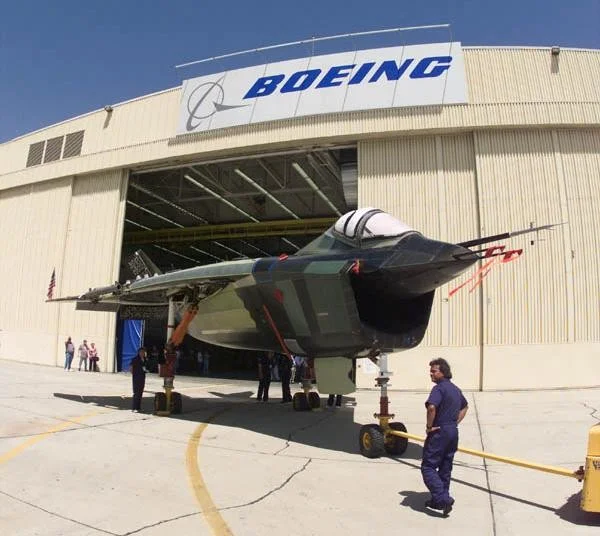
Both these programs were initiated at around the same time (1993 and 1994) and shared similar goals.
Read More: Douglas X-3 Stiletto – The Flying Shoe
The CALF aimed to produce short takeoff vertical landing (STOVL) strike fighters, which would replace the legendary F-16 Fighting Falcon from the United States Marine Corps. The Air Force would eventually join the effort and the CALF program would take off.
On the other hand, a review from the Pentagon on fighter aircraft had led to the initiation of the Joint Advanced Strike Technology (JAST) program, which, among other objectives, aimed to include US Navy in the Joint Strike Fighter Program.
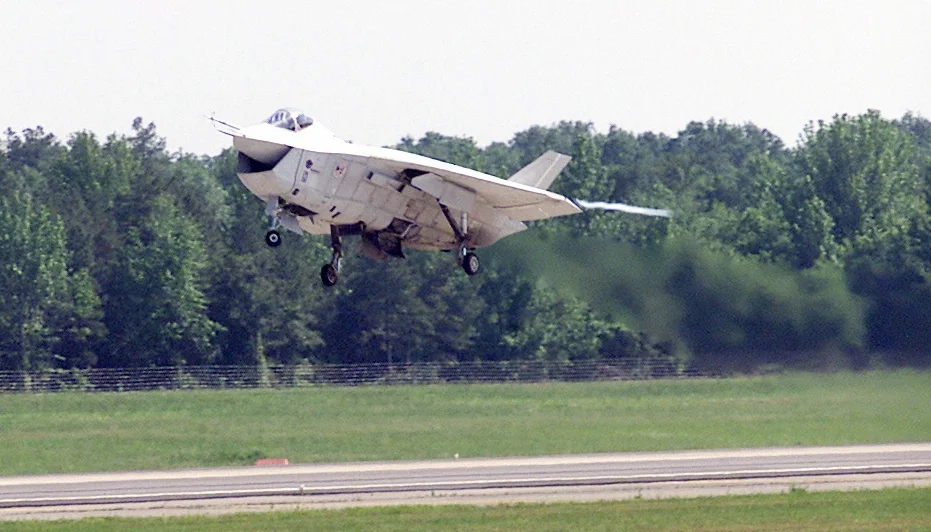
This program would develop aircraft, weapons, and relevant technology that would replace the US aircraft F-16, A-10, F/A-18A-D, AV-8B, and EA-6B, and the UK aircraft Harrier GR7, GR9s, and Tornado GR4.
The merged program (CALF and JAST) would continue under the name JAST until the engineering, manufacturing, and development phase when it was renamed, the Joint Strike Program.
Numerous countries would decide to participate in the project, with the UK, committing 200 million in November 1995 for the concept development phase (10% of the total value).
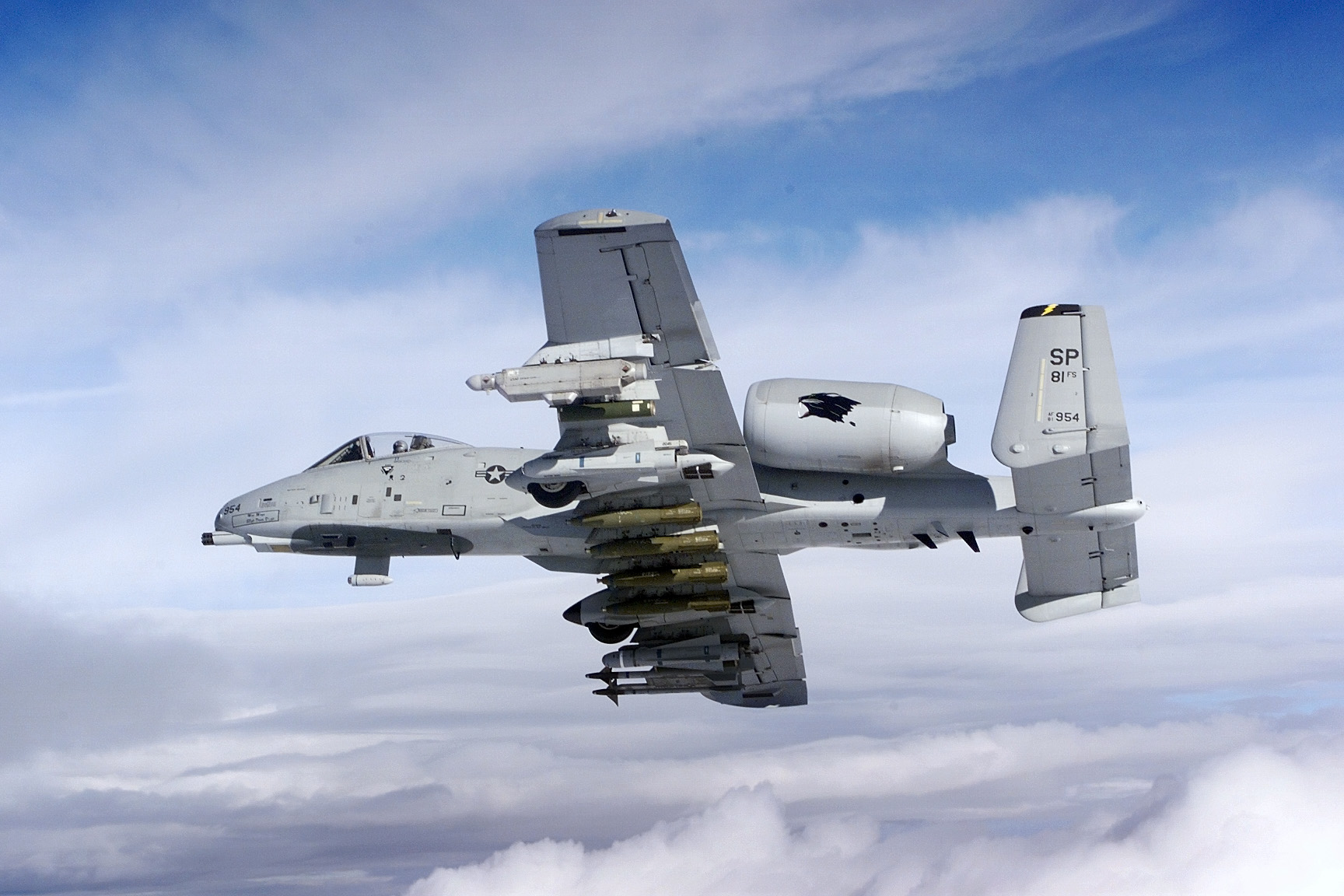
The DoD received proposals from 4 companies for this program. Lockheed Martin, McDonnell Douglas, Northrop, and Boeing had all submitted their prototype STVOL proposals, however, the DoD awarded contracts only to Lockheed Martin and Boeing.
The contracts were awarded in November 1996, with each company required to develop two prototypes that would demonstrate the following functions:
- conventional takeoff and landing (CTOL) – primarily Air Force requirement.
- short takeoff and vertical landing (STOVL) – primarily Marine Corps requirement.
- carrier takeoff and landing (CV version) – primarily Navy requirement.
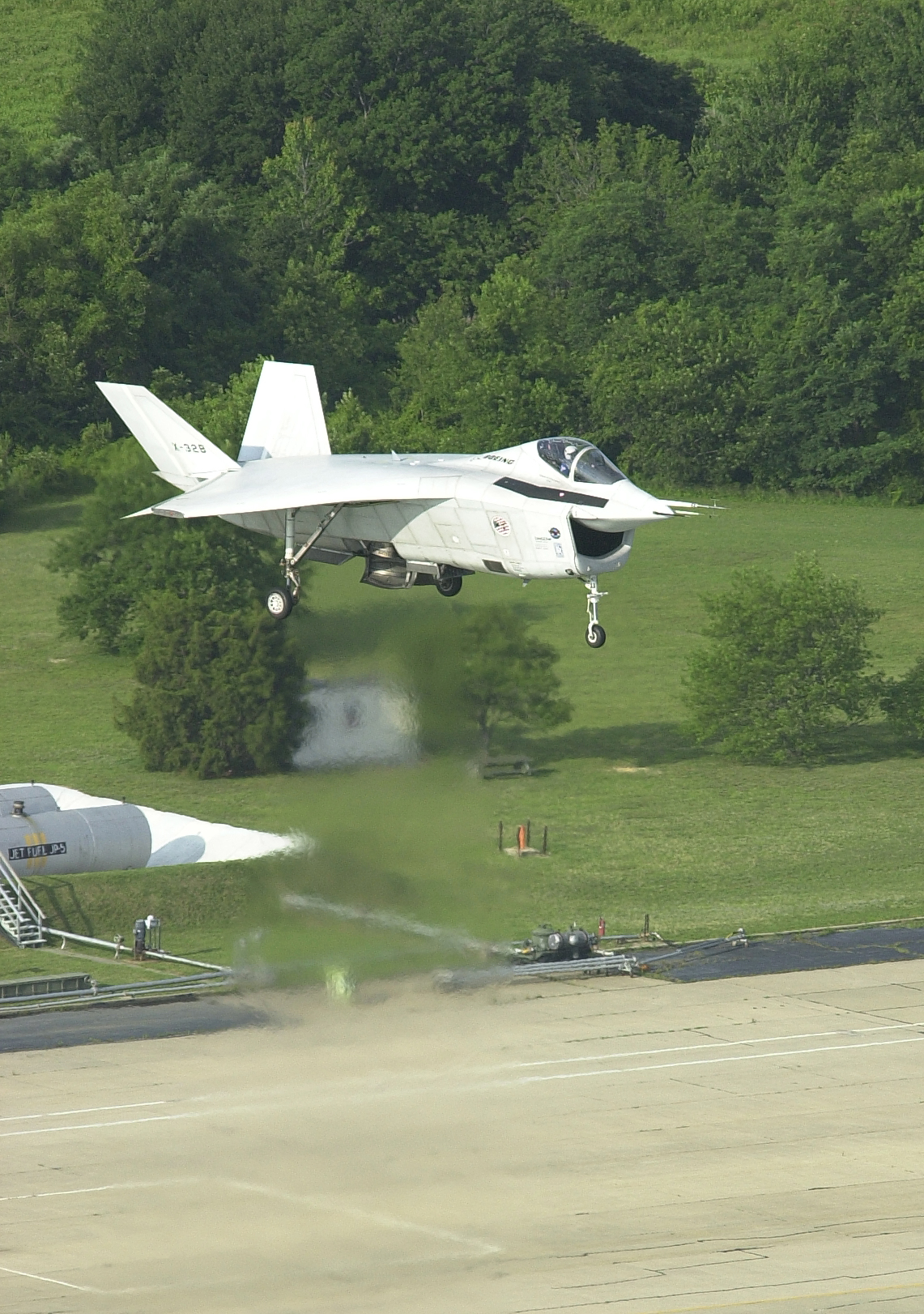
Considering that the JSF program was the biggest program since the 60s and 70s Lightweight Fighter Program that resulted in F-16 and F/A-18, both Boeing and Lockheed were expected to invest heavily to win the competition.
To prevent companies from going bankrupt in an attempt to win the competition, the DoD gave each company 750 million dollars to produce 2 prototypes and prohibited them from using their own funds. This would also encourage the companies to produce low-cost aircraft, which would pay off in the acquisition process for the DoD.
Read More: MiG-21 Fishbed – The AK-47 of Combat Aircraft
Boeing began the process of development of the aircraft codenaming its aircraft, X-32. They were focused on producing a lower-cost, easily manufacturable aircraft, which would be built around a one-piece carbon fiber delta wing.
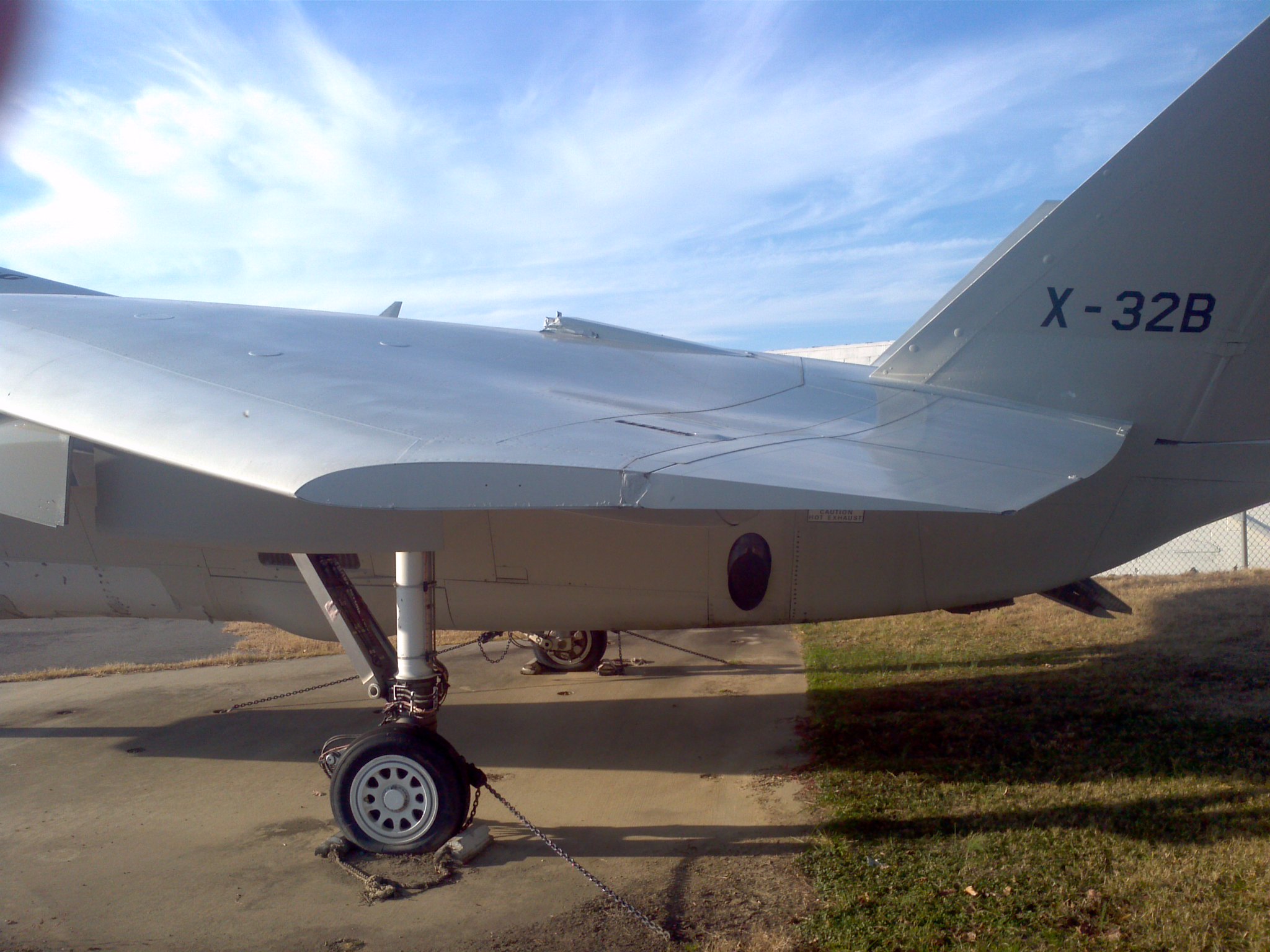
The delta wing was high-mounted and had a sweep angle of 55 degrees to lower the transonic drag while being able to carry up to 20,000 pounds of fuel.
Boeing went for the direct lift thrust vectoring system, which would suffice to complete the vertical landing and short takeoff requirements.
This required the engine to be placed very close to the cockpit, shifting the center of gravity towards the front of the aircraft to allow the aircraft to hover. The location of the engine was highly unusual for a fighter plane, as they would normally have the engine placed in the rear part of the plane.

Nevertheless, Boeing made it work using a Pratt & Whitney JSF F119-PW-614 engine that would produce thrust in excess of 42,000 pounds. The power plant would be a derivative of F-22 Raptors after-burning turbofan.
The airplane would also have an air intake area in the front (chin) of the aircraft, which would feed sufficient air to enable the aircraft to hover.
Using a chin air in-take gave the aircraft a weird shape but would also make the aircraft famous through the nickname “Monica”, referring to the White House intern who was engaged in a scandal with President Bill Clinton.
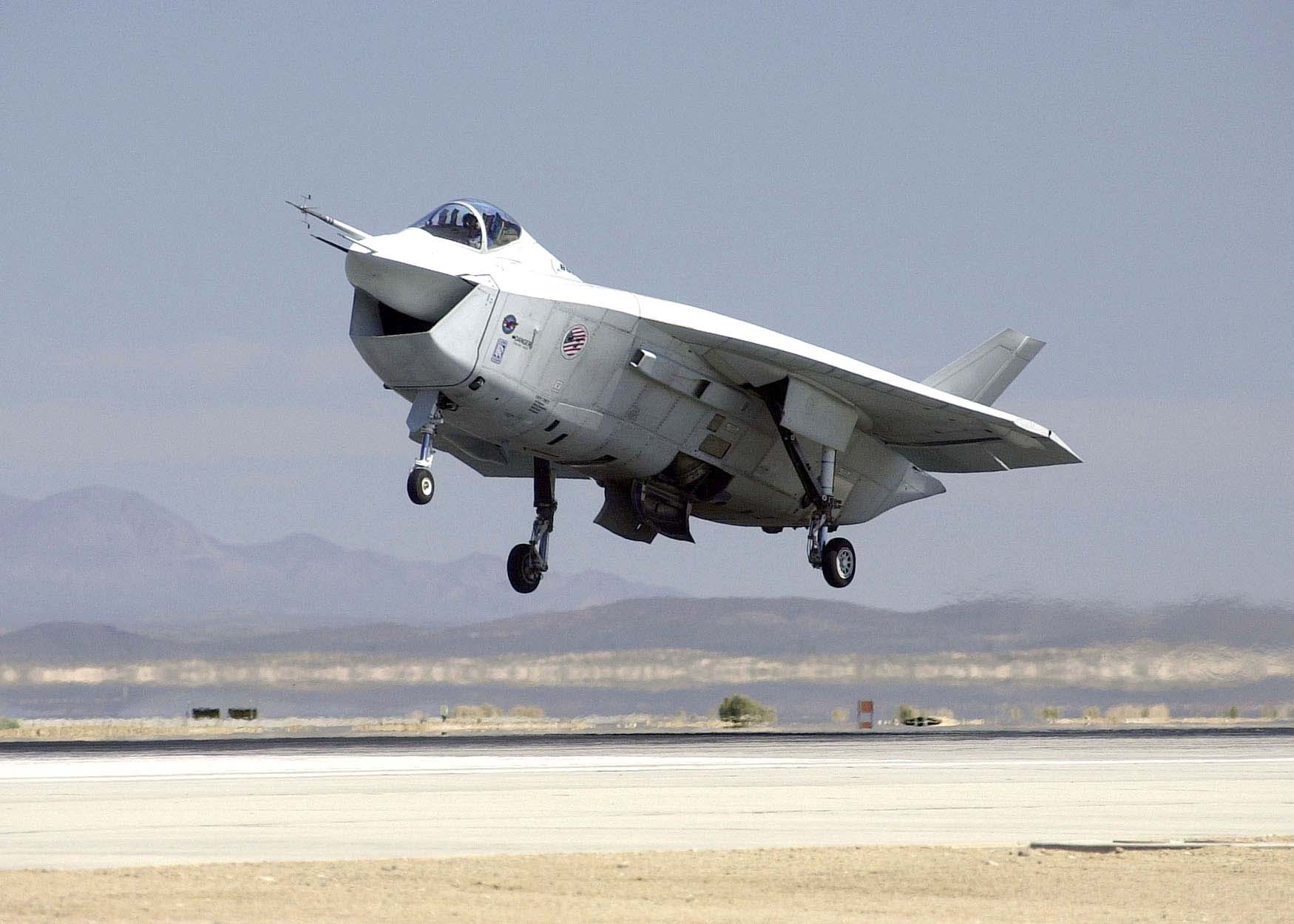
The US Navy would request Boeing to update the design of the aircraft, opting for a conventional tail, which would require changing the delta wing frame.
The new design was prepared, however, it would not be incorporated into any of the aircraft as it would be hard to meet the deadline.
To fulfill all the DoD’s requirements, Boeing decided to produce two aircraft, with X-32A to demonstrate CTOL and Carrier Trial, while the X-32B would demonstrate the STOVL.
Operational History
The X-32 A made its first flight on 18 September 2000, taking off from Palmdale Plant, and heading to Edwards Air Force Base.
The aircraft was piloted by Fred Knox. Even though the flight was considered a success as it completed 80% of the projected goals, the aircraft would experience some issues that would result in shortening the flight time from 40 to 20 minutes.
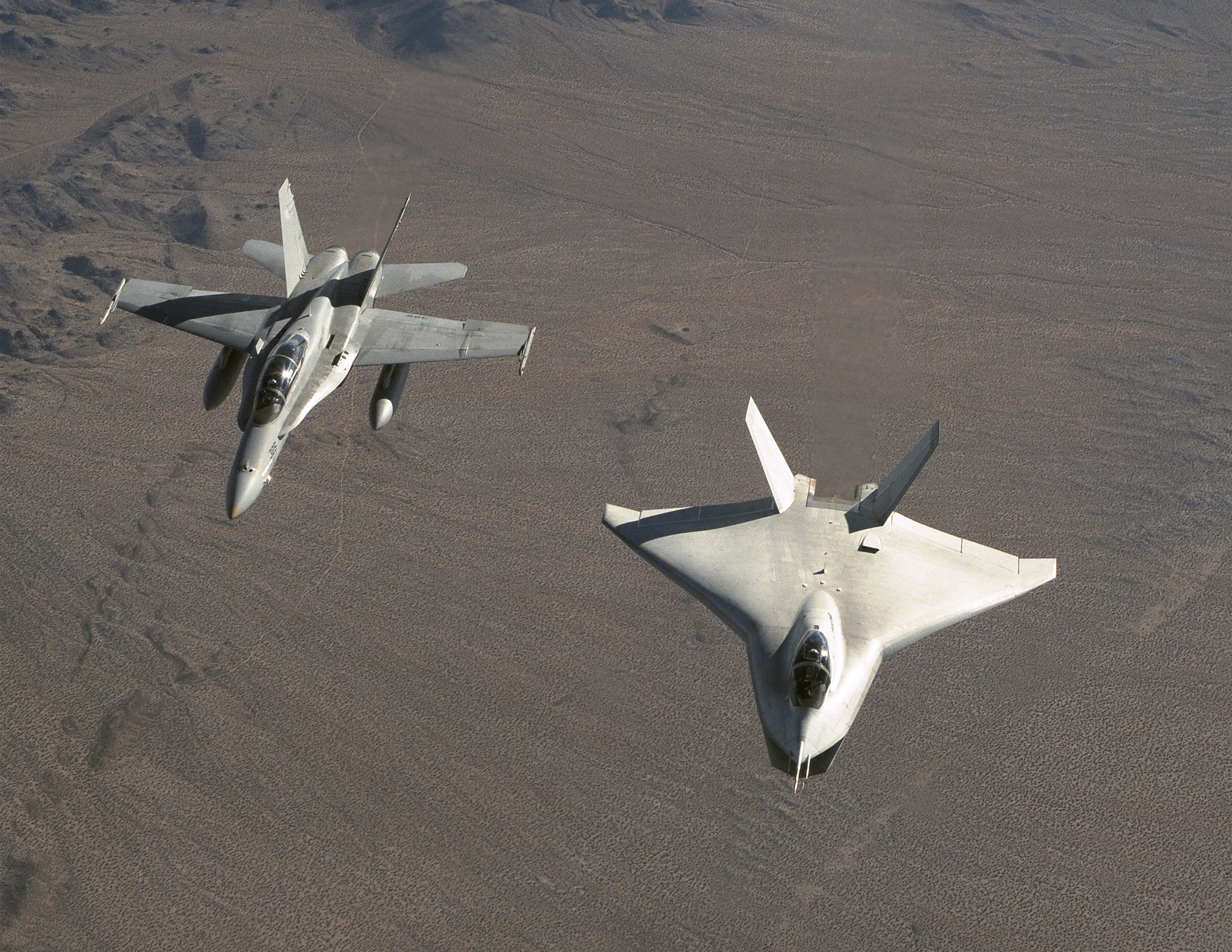
During this flight, the aircraft needed 670 meters (2200 ft) to become airborne at a speed of 280km/h (170mph). It was noted that during the initial phases of flight, the F/A-18s that served as chasing planes, found it difficult to keep up with the X-32.
The X-32A would go on to complete 66 flights during a 4-month test phase. It would meet the Air Force’s requirements for CTOL and the Navy’s requirement for Carrier Takeoff.
The test would also validate weapon bay operations, supersonic flight, and handling qualities during inflight refueling.
Read More: Su-25 Frogfoot – Devastating Soviet Ground Attacker
Following the X-32A, in March 2001 the X-32B would complete its initial flight and test the STOVL feature. Similar to X-32A, the X-32B would fly from Palmdale to Edwards Air Force Base. The X-32B would go on to use a modified version of the engine, coded 614S.

The aircraft would complete a 50-minute flight while testing its capabilities. In contrast to the A version, this aircraft’s engine was a direct lift engine and had a butterfly valve to divert the gases of the engine to the thrust vectoring nozzles, which were located close to the aircraft’s center of gravity.
This mechanism would enable the aircraft to use engine gases and provide vertical thrust for short take-off and vertical landing.
The STOVL mechanism was very similar to the AV-8B Harrier II aircraft, which used the jet’s exhaust for thrust vectoring. A special mechanism would prevent the hot gas from recirculation that could overheat the aircraft.
X-32B would complete 78 flights during 4 months of testing. One of those flights was the transcontinental ferry flight from Edwards AFB to Naval Air Station Patuxent River.

The X-32B managed to meet the Marine Corps STOVL requirements by shifting the thrust from the aircraft’s cruise nuzzles to the lift nuzzles.
The X-32 would be piloted by pilot Phillip “Rowdy” Yates, a naval aviator, who would be given a 20 person maintenance detachment and 2 F/A-18s to serve as chase planes. The testing pilots for both Boeing’s X-32 and Lockheed’s X-35 would serve only as demonstrators.
The JSF program wanted the companies to design their own test programs, that would best display their respective aircraft’s capabilities and how they would meet or exceed the requirements.
Companies could use the testing exercises to reveal additional features which were not part of the requirements. The testing exercises of each company would be separate from one another.

Pilot Yates emphasized that during the X-32 test exercises he observed that X-32 had no problems with handling, however, it came short in demonstrating STOVL and supersonic flight using the same configuration. The X-32 would require the maintenance crew to make modifications before switching from one to the other.
Despite the genius design, the aircraft would often suffer from poor power output and engine overheating while in the STOVL mode due to hot air exhaust entering the engine.
The testing would conclude in July 2001.
Retirement
On 26 October 2001, the DoD announced that Lockheed Martin’s X-35 had won the competition. The victory of X-35 over X-32 was mainly attributed to X-35’s performance demonstration, more specifically when it took off in less than 150m (500 ft), went supersonic, and landed vertically.
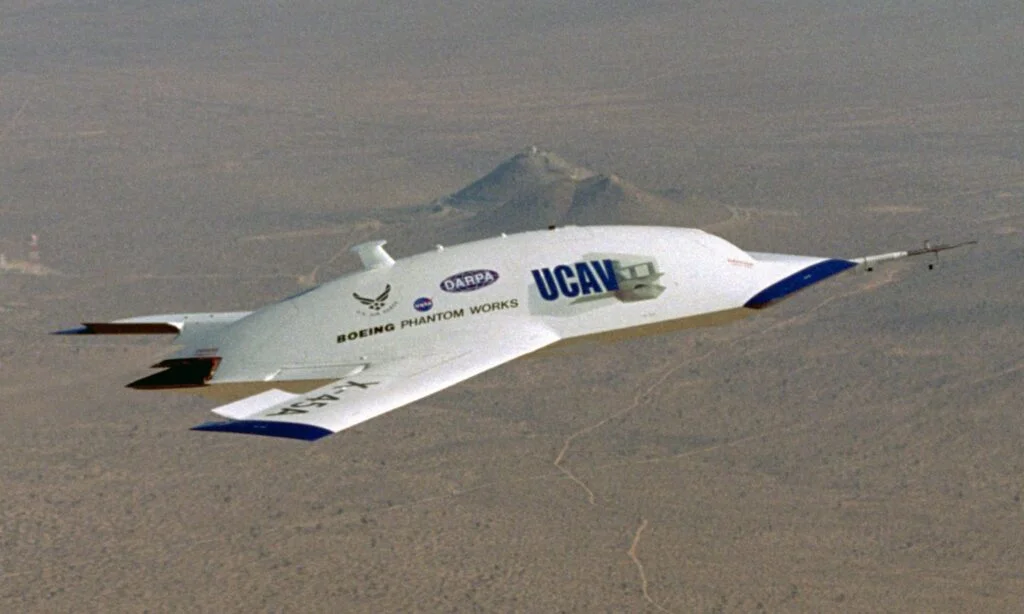
This was not a feature that could be performed by Boeing’s X-32.
Nevertheless, this program was considered to be a strategic investment by Boeing. Through this program, Boeing made a step closer to perfecting stealth technology, and improved design and manufacturing methods.
Read More: Douglas XB-42 Mixmaster – Good Vibrations?
Consequently, Boeing applied some of these advancements to other programs such as the F/A-18E/F Super Hornet and the X-45A Unmanned Combat Air Vehicle (UCAV).
In 2005, the National Museum of the United States Air Force near Dayton, Ohio became the X-32A’s permanent home.
If you like this article, then please follow us on Facebook and Instagram.
Specifications
- Crew: 1
- Length: 45 ft 0.1 in (13.72 m)
- Wingspan: 36 ft 0 in (10.97 m)
- Height: 17 ft 3.8 in (5.28 m)
- Empty weight: 24,030 lb (10,900 kg)
- Max takeoff weight: 38,000 lb (17,200 kg)
- Powerplant: 1 × Pratt & Whitney YF119-PW-614 afterburning turbofan, 28,000 lbf (120 kN) thrust dry, 43,000 lbf (190 kN) with afterburner
- Maximum speed: 1,200 mph (1,931 km/h, 1,000 kn) at altitude

